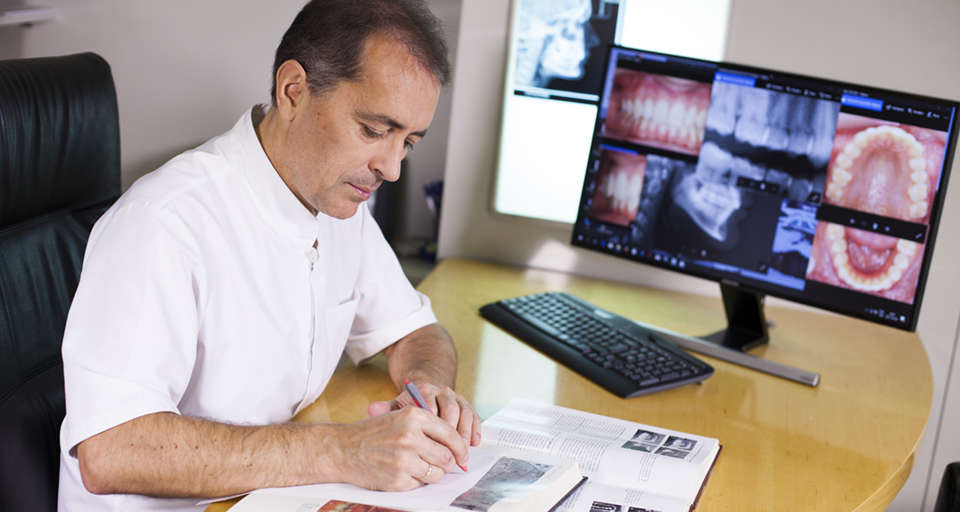Development of labial gingival recessions in orthodontically treated patients.
Written by admin on February 28, 2013
Am J Orthod Dentofacial Orthop. 2013 Feb;143(2):206-12. doi: 10.1016/j.ajodo.2012.09.018.
Renkema AM(1), Fudalej PS, Renkema A, Kiekens R, Katsaros C.
Author information:
(1) Department of Orthodontics and Craniofacial Biology, Radboud University
Nijmegen Medical Centre, Nijmegen, The Netherlands.
INTRODUCTION: Our aim was to assess the prevalence of gingival recessions in
patients before, immediately after, and 2 and 5 years after orthodontic treatment.
METHODS: Labial gingival recessions in all teeth were scored (yes or no) by 2
raters on initial, end-of-treatment, and posttreatment (2 and 5 years) plaster
models of 302 orthodontic patients (38.7% male; 61.3% female) selected from a
posttreatment archive. Their mean ages were 13.6 years (SD, 3.6; range, 9.5-32.7
years) at the initial assessment, 16.2 years (SD, 3.5; range, 11.7-35.1 years)
at the end of treatment, 18.6 years (SD, 3.6; range, 13.7-37.2 years) at 2 years
posttreatment, and 21.6 (SD, 3.5; range, 16.6-40.2 years) at 5 years
posttreatment. A recession was noted (scored “yes”) if the labial cementoenamel
junction was exposed. All patients had a fixed retainer bonded to either the
mandibular canines only (type I) or all 6 mandibular front teeth (type II).
RESULTS: There was a continuous increase in gingival recessions after treatment
from 7% at end of treatment to 20% at 2 years posttreatment and to 38% at 5
years posttreatment. Patients less than 16 years of age at the end of treatment
were less likely to develop recessions than patients more than 16 years at the
end of treatment (P = 0.013). The prevalence of recessions was not associated
with sex (P = 0.462) or extraction treatment (P = 0.32). The type of fixed
retainer did not influence the development of recessions in the mandibular front
region (P = 0.231).
CONCLUSIONS: The prevalence of gingival recessions steadily increases after
orthodontic treatment. The recessions are more prevalent in older than in
younger patients. No variable, except for age at the end of treatment, seems to
be associated with the development of gingival recessions.
Copyright © 2013 American Association of Orthodontists. Published by Mosby, Inc.
All rights reserved.
DOI: 10.1016/j.ajodo.2012.09.018
PMID: 23374927 [Indexed for MEDLINE]




